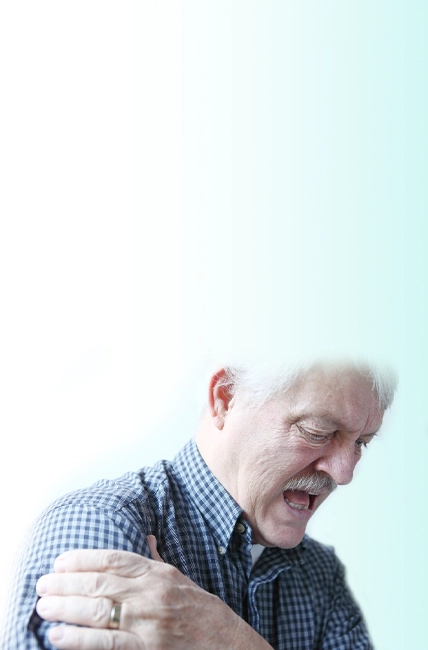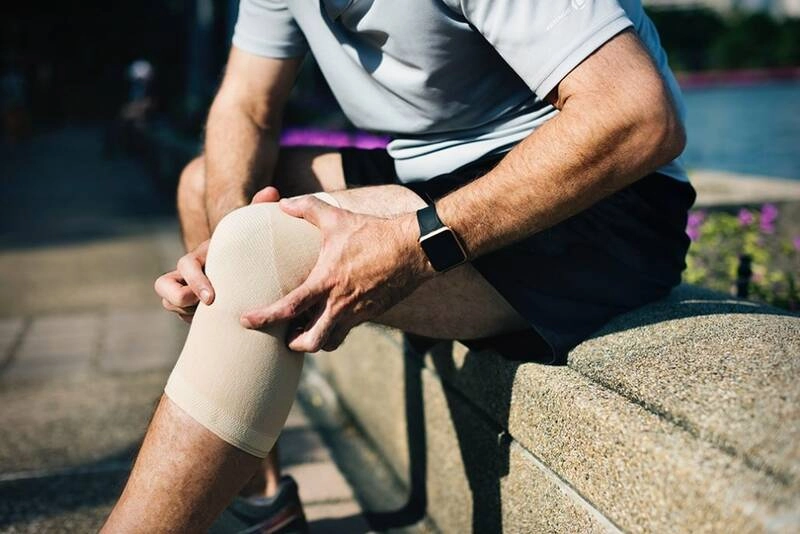

Chiropractic Care for Bursitis in Anchorage, AK
Expert Chiropractic Care for Bursitis in Anchorage
If you’ve had bursitis, you know how difficult it can be. You may feel achy or stiff, or notice swollen tissue around a joint, which can seriously degrade your quality of life. You don’t have to simply put up with it. As experts in the musculoskeletal system, the Anchorage chiropractors at Better Health Alaska can treat many joint issues, including bursitis. We have the knowledge and experience to help deliver you from pain and swelling. For over twenty years, our office has provided effective chiropractic care for bursitis.Call us at 907-743-0110 for a same-day chiropractic adjustment near you.

Your First Visit for Bursitis: What to Expect from Your Chiropractor In Anchorage
The goal of your first visit is to get a proper diagnosis and a treatment plan. Your Anchorage chiropractor will discuss your current symptoms — whether the pain came on suddenly or built over time — as well as your general medical history. With a professional diagnosis in hand, a treatment plan can be developed and implemented to restore your range of motion and reduce pain.
Benefits of Regular Chiropractic Treatment for Bursitis Pain
While bursitis can sometimes get better on its own, treatment is often required for persistent cases. It is widely understood that conservative, non-invasive treatments should be utilized before considering more invasive measures like surgery or strong pain medication. The most effective conservative approaches include chiropractic medicine, physical therapy, and physical rehabilitation.
At Better Health Alaska, we believe in a comprehensive strategy for bursitis relief. Instead of focusing on a single treatment, our Anchorage chiropractors collaborate with in-house physical therapists and massage therapists to address your condition from every angle. This integrated approach allows us to not only reduce the inflammation of the bursa but also to correct any underlying biomechanical issues, strengthen surrounding muscles to prevent recurrence, and improve your overall joint function for lasting results.
Visit Better Health Alaska
South Anchorage
- 8840 Old Seward Hwy E, Anchorage, Alaska 99515
- Phone: 907-743-0110
- Open Hours: 9AM to 7PM
Common Types and Locations of Bursitis
Because bursae are located throughout the body, the condition can pop up pretty much anywhere. That being said, there are a number of different types that focus on certain areas. Here, in brief, are five:
- Trochanteric Bursitis: Inflammation on the outside of the hip.
- Olecranon Bursitis: Inflammation of the elbow, usually from an injury.
- Pes Anserine Bursitis: Inflammation on the inside of the knees.
- Prepatellar Bursitis: Inflammation in the front of the kneecap.
- Subacromial Bursitis: Inflammation in the shoulder’s rotator cuff tendons.
What Parts of the Body Does Bursitis Affect?
As mentioned above, Bursitis can occur anywhere there are bursae fluid sacs. And, in case you’re wondering there are 150+ within the human body. Remember, they act as a kind of lubricant in joint capsules to protect joints, muscles, bones, and tendons. The four most common areas for bursitis are listed below.
- Hip Bursitis
- Knee Bursitis
- Shoulder Bursitis
- Elbow Bursitis
What Are the Symptoms?
Painful, achy, and stiff joints. For some, it grows over time, while others experience the pain suddenly. In some cases, it can be severe if calcium deposits are present. People can experience a loss of range of motion, immobility, and often inflamed and swollen joint areas were impacted.
Risk Factors and Prevention
Lifestyle-related activities are typical risk factors. Repetitive motions from work or athletics can cause mechanical stress on joints. Other risk factors include arthritic conditions, gout, poor posture, infections, age, and being overweight. To prevent bursitis, it’s important to analyze your daily repetitive movements, stretch properly, and condition the areas you use most. If you have pain for more than a week, or if redness and swelling appear, it’s time to see a chiropractor for bursitis.
How to Diagnose Bursitis?
Because of how common bursitis is, most often all it takes is visiting any Better Health Chiropractic clinic. By talking about your symptoms and medical history with the doctor and going through a simple examination, diagnosis is pretty straightforward. Sometimes lab tests will be required, and taking a simple x-ray only of the affected joint area (vs. of your entire torso or chest).
How to Treat Bursitis?
In a general sense, often bursitis gets better on its own as the bursae become less inflamed, swollen and irritated. When pain persists, treatments can range from surgery to noninvasive physical therapy or chiropractic medicine. When additional pain relief is needed, often corticosteroid injections and antibiotics are considered.
Why Choose Better Health Alaska?
Better Health Alaska has helped thousands of patients get their life back through safe and effective treatments. We use a multi-pronged, non-invasive approach to treat different conditions at a reasonable cost. We accept many types of insurance, and most insured patients pay $25 or less per visit. We also have affordable options for the uninsured and offer a same-day appointment and 10-minute wait promise.
You don’t have to ‘just put up with’ bursitis pain. Contact Better Health Alaska to schedule your same-day appointment. Let our experienced Anchorage team provide the effective, non-invasive chiropractic care for bursitis you need to get back to your life.
Conditions Helped by Chiropractors:
Same-Day Chiropractic Appointment. 10-Minute Wait Promise.
Better Health Alaska Chiropractors has helped thousands of patients get their life back through safe, effective, and cutting-edge treatments like the Alaska Back Pain Protocol. We use a multi-pronged, non-invasive approach to treat different conditions. And it’s done at a reasonable cost. We accept many types of insurance, and most insured patients pay $25 or less per visit. We even have options for the uninsured.


